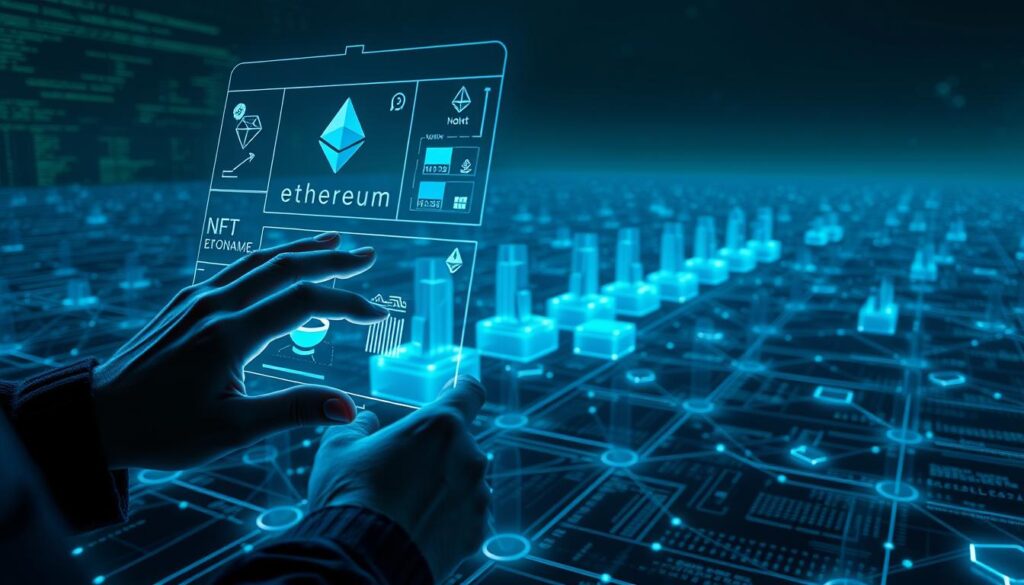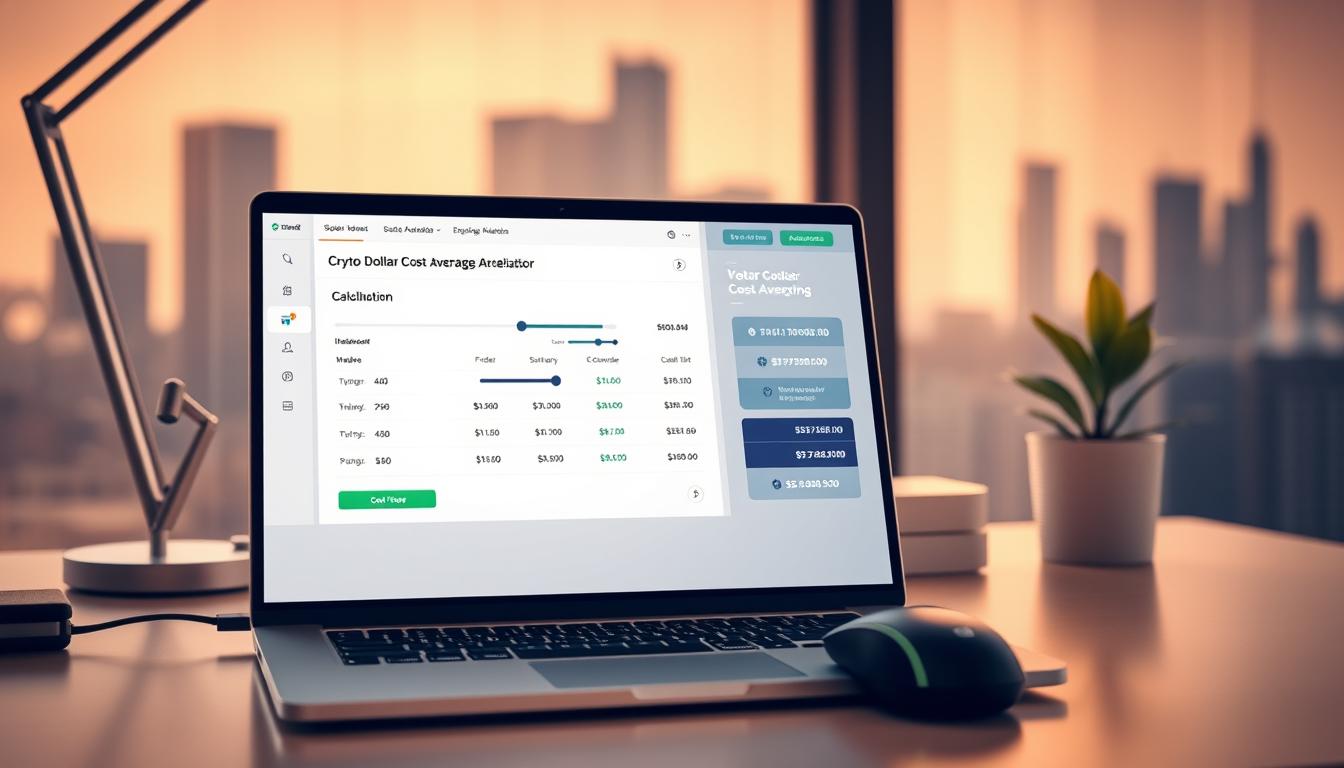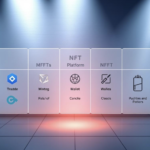Now Reading: ERC-721A gas optimized bulk NFT minting smart contract implementation
- 01
ERC-721A gas optimized bulk NFT minting smart contract implementation
ERC-721A gas optimized bulk NFT minting smart contract implementation
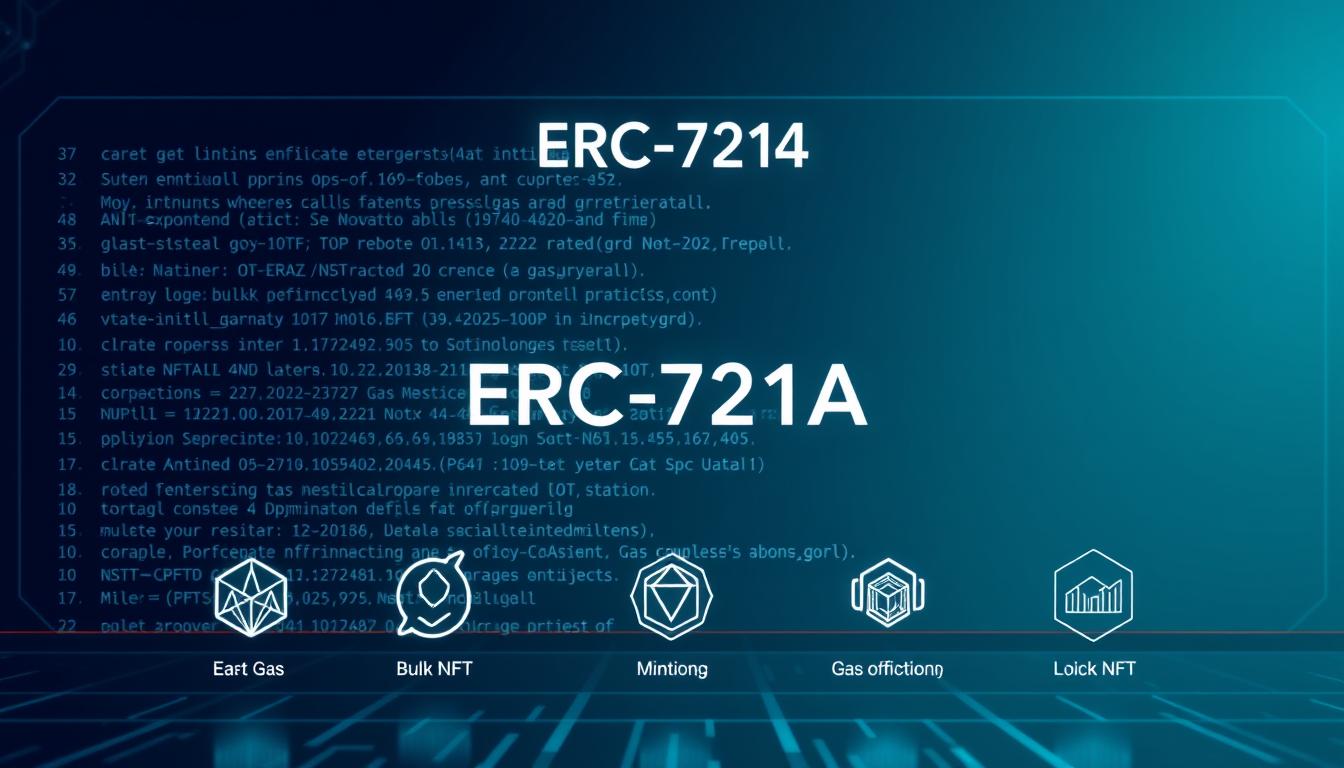
Creating multiple digital items on blockchains has long faced a critical challenge: skyrocketing transaction fees. High network costs often make large-scale projects financially impractical for creators and collectors alike. A breakthrough emerged when the Azuki development team unveiled an upgraded approach to managing these processes in early 2023.
Traditional methods required significantly higher resources as projects scaled, with costs multiplying for each additional unit created. The new framework introduced by Azuki changed this dynamic dramatically. By rethinking how information gets stored and processed, their solution allows creators to produce multiple items at nearly identical costs to single-unit operations.
This advancement carries major implications for artists, gaming platforms, and community-driven initiatives. Reduced financial barriers mean smaller creators can now compete in markets previously dominated by well-funded teams. Collectors benefit through increased accessibility to complete sets or series without prohibitive expenses.
Key Takeaways
- New blockchain standards enable cost-effective creation of multiple digital collectibles simultaneously
- Azuki’s 2023 innovation reduces network fees by up to 80% compared to earlier systems
- Scalable solutions help creators manage large projects without exponential cost increases
- Technical improvements focus on streamlined data handling and storage optimization
- Lower barriers to entry promote broader participation in digital asset markets
Overview of NFT Minting and ERC-721A
Unique digital assets transformed how we prove ownership in virtual spaces. The 2018 ERC-721 proposal established rules for creating verifiable one-of-a-kind items on blockchains. Unlike interchangeable cryptocurrencies, these tokens store permanent records of authenticity and origin.
Core Features of Digital Collectibles
Each token acts like a digital certificate, containing details about its creator and properties. This information remains unchangeable, even when transferred between owners. Artists use this system to issue limited editions, while gamers track rare in-game items.
Early versions faced challenges as projects grew. Network charges for creating multiple items often surpassed their market value. During popular launches, users sometimes paid more in processing fees than the collectible’s actual price.
Why Transaction Costs Matter
Blockchain operations require computational resources measured in network units. Complex creations demand higher resources, directly impacting user expenses. Projects with inefficient designs become inaccessible to everyday participants during peak activity.
Recent advancements focus on minimizing redundant data storage across multiple items. Improved methods allow creators to launch entire collections while reducing repetitive processes. These changes help maintain reasonable costs even when producing thousands of unique tokens.
Understanding Smart Contracts and Blockchain Fundamentals
Digital agreements now execute autonomously through code—no lawyers needed. This breakthrough stems from smart contracts, self-operating programs that enforce terms automatically. They’re built on blockchain networks, decentralized systems that verify actions through community consensus rather than central control.
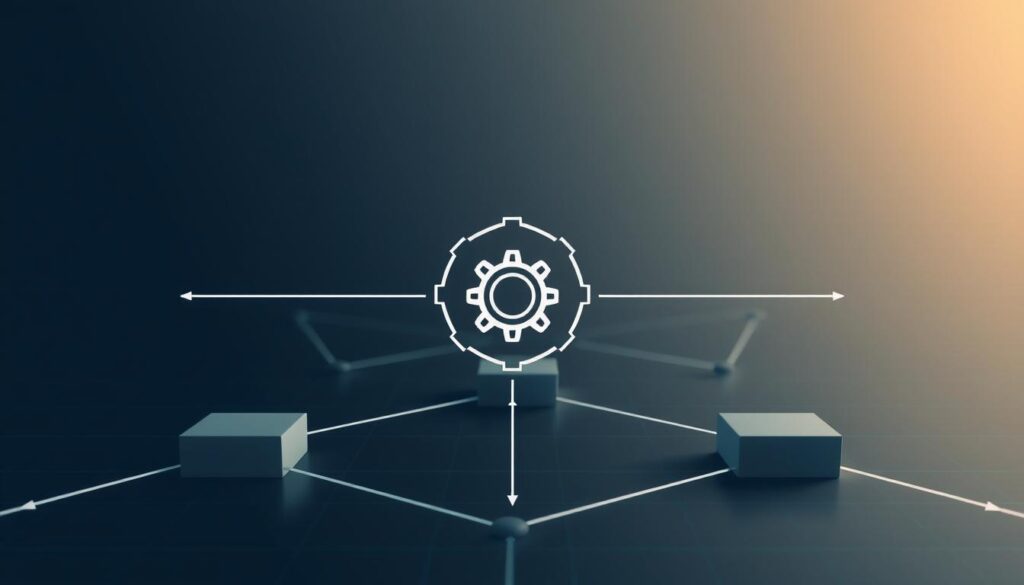
Every blockchain transaction involves two core actions: writing and reading data. Write operations change network records—like transferring ownership—which demands significant resources. Read operations simply check existing data, needing minimal power. This gap explains why updating a ledger costs more than viewing it.
| Operation Type | Resource Usage | Cost Impact |
|---|---|---|
| Write Transaction | High (State Changes) | Higher Fees |
| Read Transaction | Low (Data Checks) | Lower Fees |
Developers face unique challenges with blockchain’s unchangeable records. While immutability ensures trust, it complicates fixes post-launch. Network congestion further affects speed and pricing—peak times slow processing and hike costs.
Mastering these mechanics is crucial for efficient contract development. Effective designs minimize write actions and optimize data storage. Such skills help creators build adaptable systems that scale smoothly without fee explosions.
By grasping these principles, teams can craft solutions that serve users affordably. The right technical choices make blockchain tools accessible, letting communities grow without budget surprises.
Key Concepts Behind Gas Optimization in Smart Contracts
Efficient blockchain operations hinge on minimizing resource-heavy processes. Every interaction with the network carries a price tag determined by computational complexity. Strategic design choices can slash these expenses while maintaining core functionality.

Reducing Gas Costs and Storage Usage
Write operations dominate network fees because they alter blockchain records. Storing duplicate information multiplies expenses unnecessarily. Modern approaches consolidate repetitive data points into single reference entries.
One breakthrough involves tracking ownership changes only once per group creation. Traditional systems updated records for every individual item. This shift alone cuts transaction fees by over 60% for large collections.
Benefits of Batch Minting
Processing multiple items simultaneously spreads fixed costs across an entire set. Imagine paying highway tolls per vehicle instead of per caravan. This method makes launching 100 digital assets nearly as affordable as releasing five.
- Sequential numbering simplifies metadata storage
- Shared ownership records reduce redundant updates
- Consolidated transactions minimize network congestion
These techniques maintain compatibility with existing marketplaces while revolutionizing cost structures. Creators can now deploy entire collections without budget strain. For deeper insights into batch minting strategies, developers should examine proven implementation patterns.
The math proves impactful: producing 10 items through optimized methods costs less than three via older systems. This efficiency unlocks new possibilities for artists and developers alike.
Deep Dive: ERC-721A gas optimized bulk NFT minting smart contract implementation
The economics of large-scale digital projects shifted dramatically with recent technical breakthroughs. A redesigned framework for managing ownership records now enables creators to launch entire series at previously unimaginable costs.
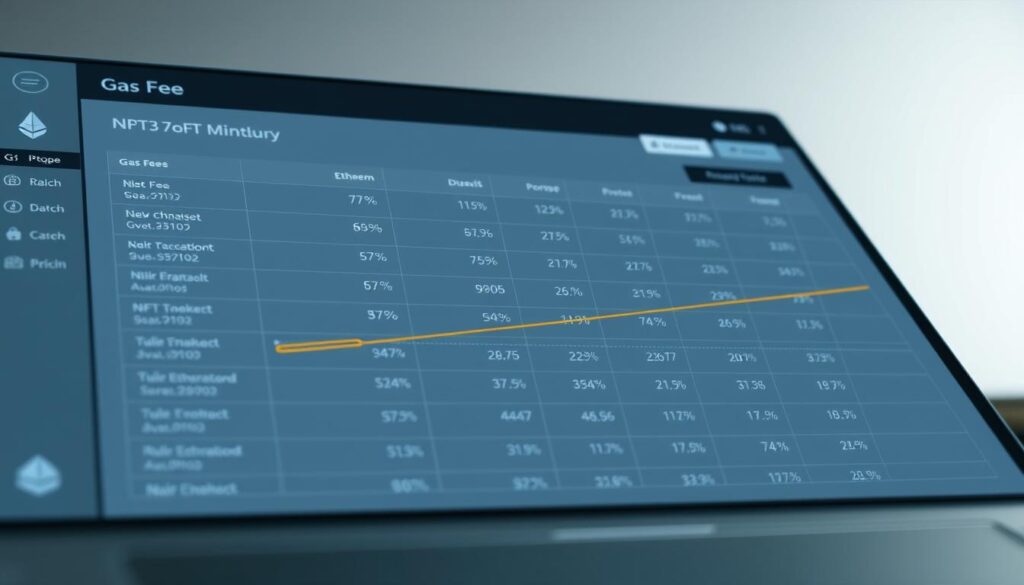
Cost Reduction Through Structural Innovation
Traditional systems required separate updates for each new item. Every addition triggered multiple ledger changes, multiplying expenses. The revamped approach consolidates these actions into single operations.
| Method | Cost Per Item | 10-Item Batch | Savings |
|---|---|---|---|
| Legacy System | 115k units | 1.15M units | Base |
| Modern Framework | 2k units | 20k units | 94% |
This efficiency stems from redesigned data storage methods. Ownership details now use sequential tracking instead of individual entries. Balance updates occur once per transaction, not per item.
Popular projects like Azuki demonstrate these savings in action. Their approach modified core components while maintaining compatibility with existing platforms. Developers achieved this through:
- Consolidated ownership records
- Batch processing capabilities
- Minimized write operations
For creators exploring minting processes, these advancements remove previous financial barriers. The system scales efficiently, allowing larger collections without proportional cost increases.
Technical Specifications and Contract Architecture
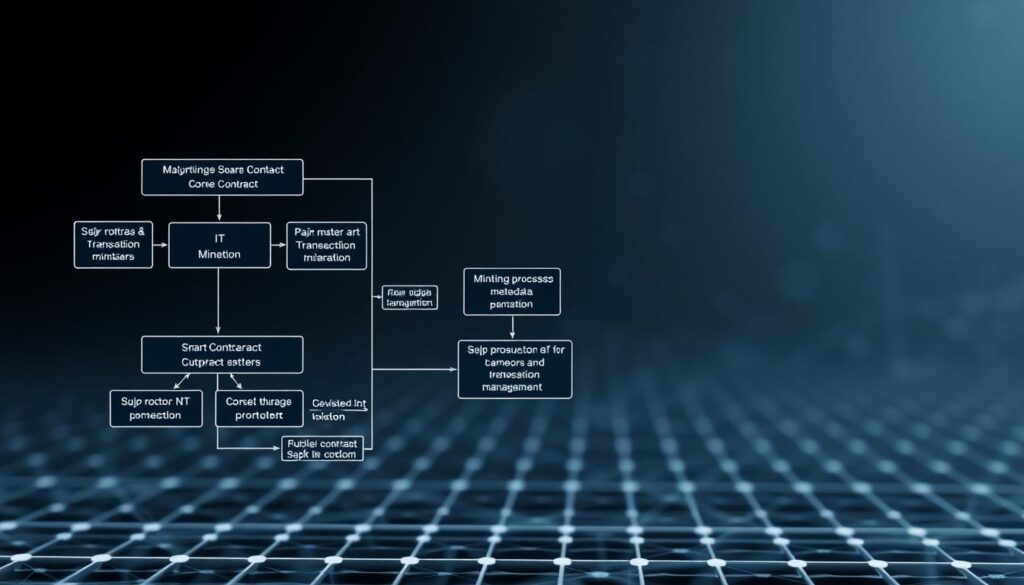
Blockchain developers face unique challenges when designing systems that scale. The structural redesign of core components achieves efficiency through intelligent data organization. Instead of separate entries for each item, consolidated storage structures track multiple assets simultaneously.
Key mappings like _balances and _owners undergo strategic modifications. These changes reduce storage demands while preserving critical ownership details. Core functions including transferFrom and balanceOf operate through streamlined logic that minimizes redundant checks.
Three architectural pillars drive this approach:
- Sequential ID tracking replaces individual metadata storage
- Batch approval processes handle multiple authorizations
- Unified interfaces maintain marketplace compatibility
The code structure uses optimized address handling to verify permissions efficiently. Automated execution triggers only when specific conditions meet predefined thresholds. This prevents unnecessary network operations during routine checks.
Metadata management follows a decentralized pattern, storing essential details off-chain while maintaining cryptographic links. This separation keeps contract deployment costs low without sacrificing asset authenticity. Developers can implement these patterns through modular function designs that support future upgrades.
By rethinking fundamental components, this framework achieves compatibility with existing standards through creative contract development. The result maintains full functionality while dramatically improving operational economics for large collections.
FAQ
How does ERC-721A reduce transaction fees for NFT collections?
It minimizes redundant data storage during bulk minting by optimizing token ID assignments and metadata handling. This lowers computational work, directly cutting blockchain network costs per transaction.
What makes batch transfers more efficient in this standard?
The protocol groups multiple token creations into a single transaction. This reduces repetitive processes like address checks and balance updates, which traditionally drive up gas fees.
Can existing projects migrate to ERC-721A without rewriting code?
Yes, since it’s backward-compatible with ERC-721. Developers can integrate the standard through OpenZeppelin’s libraries or modify existing contracts to adopt gas-saving functions like _mintBatch.
Are there trade-offs when using batch minting optimizations?
While storage costs drop, complex token distribution logic might require additional testing. Projects like Aztec and Bored Ape Yacht Club balance these factors by auditing contract interactions pre-deployment.
How do variable gas prices impact bulk operations?
Network congestion can raise fees, but ERC-721A’s design ensures bulk actions remain cheaper than individual mints. Platforms like Ethereum and Polygon benefit as users save up to 40% during peak times.
Does this standard support dynamic metadata for NFTs?
Yes. Metadata handling remains flexible, allowing on-chain or off-chain customization. Protocols like Chainlink VRF integrate seamlessly for randomized traits without compromising gas efficiency.
What security measures are critical for optimized contracts?
Overriding functions like _beforeTokenTransfer requires strict access controls. Tools from CertiK and ConsenSys Diligence help teams audit reentrancy risks and ownership permissions.
Which industries benefit most from this implementation?
Gaming (e.g., Immutable X), ticketing systems, and large-scale art drops gain advantages. Reduced fees enable microtransactions and frequent transfers, expanding use cases beyond traditional NFT markets.


